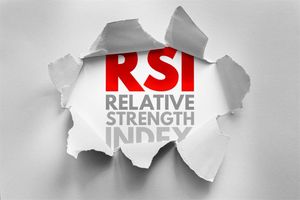
Transportation company Schneider (NYSE: SNDR) met Wall Street’s revenue expectations in Q1 CY2025, with sales up 6.3% year on year to $1.4 billion. Its non-GAAP profit of $0.16 per share was 13.4% above analysts’ consensus estimates.
Is now the time to buy SNDR? Find out in our full research report (it’s free).
Schneider (SNDR) Q1 CY2025 Highlights:
- Revenue: $1.4 billion vs analyst estimates of $1.4 billion (6.3% year-on-year growth, in line)
- Adjusted EPS: $0.16 vs analyst estimates of $0.14 (13.4% beat)
- Adjusted EBITDA: $155.9 million vs analyst estimates of $145.8 million (11.1% margin, 7% beat)
- Management lowered its full-year Adjusted EPS guidance to $0.88 at the midpoint, a 16.7% decrease
- Operating Margin: 3%, in line with the same quarter last year
- Free Cash Flow was -$5.4 million compared to -$14.3 million in the same quarter last year
- Market Capitalization: $4.28 billion
StockStory’s Take
Schneider’s first quarter results reflected a combination of cost containment, disciplined pricing, and the first full-quarter contribution from the Cowan Systems acquisition. CEO Mark Rourke emphasized ongoing structural changes—such as capital optimization and asset efficiency—to restore margins and build resilience. He also highlighted growth in dedicated trucking and intermodal, citing new business wins and improved earnings across all major segments, with particular gains in dedicated and intermodal operations. Rourke acknowledged that the freight market remains highly competitive, with pricing improvements largely offset by weather-related disruptions and external pressures like tariffs.
Looking ahead, management adopted a cautious stance, lowering full-year adjusted EPS guidance due to growing uncertainty around trade policy and freight demand. CFO Darrell Campbell explained that the revised outlook accounts for moderating trends in both price and volume, as well as the impact of tariffs on equipment costs and customer behavior. Campbell noted, “Although lower, we expect continued year-on-year improvement in results throughout 2025,” but advised that ongoing macroeconomic volatility and cost inflation could temper the pace of recovery.
Key Insights from Management’s Remarks
Management’s remarks focused on structural business shifts, integration of acquisitions, and adapting to external trade pressures as key influences on the quarter’s performance and near-term outlook.
- Cowan Systems Acquisition Impact: The first full quarter with Cowan Systems in the portfolio immediately boosted dedicated trucking revenue and earnings, contributing to a 27% increase in dedicated trucks. Management expects $20–$30 million in synergies at maturity.
- Pricing Discipline and Freight Mix: By selectively managing its freight pool and maintaining price discipline, Schneider chose to forgo certain volumes, especially where pricing did not justify the commitment. This approach aimed to prioritize profitable business, though it led to lower network volumes.
- Intermodal Growth and Mexico: Intermodal earnings nearly doubled year-over-year, driven by increased shipping activity out of western Mexico. Management pointed to new business awards and noted that shipments compliant with USMCA are exempt from tariffs, providing some resilience against trade policy changes.
- Cost Containment Initiatives: The company is targeting $40 million in additional enterprise-wide cost reductions, including investments in AI-powered digital tools and automation of routine tasks. These initiatives are designed to improve margins and operational efficiency.
- Tariff and Trade Policy Uncertainty: Management flagged tariff-driven uncertainty as a growing risk, impacting equipment costs, repair parts availability, and customer freight behavior. The resulting volatility in volumes and pricing was explicitly incorporated into the company’s revised guidance.
Drivers of Future Performance
Schneider’s management signaled that future performance will depend on navigating macroeconomic uncertainty, executing on cost control, and leveraging new business wins in core segments.
- Dedicated and Intermodal Growth: The company sees ongoing opportunity in dedicated trucking and intermodal, supported by recent customer wins and a pipeline of new business, particularly in specialty equipment and cross-border Mexico trade.
- Asset Efficiency and Technology: Schneider is focused on improving asset efficiency—such as reducing the truck-to-driver ratio—and expanding use of digital tools and automation to manage costs and support margin recovery.
- Tariff and Market Risks: Risks to future performance include ongoing tariff uncertainty, which could impact both customer demand and equipment costs, as well as competitive pressures that may limit pricing power and network volume growth.
Top Analyst Questions
- Brian Ossenbeck (JPMorgan): Asked about the expected deceleration of imports and how trade policy uncertainty is reflected in guidance; management said new intermodal business wins should offset import declines but highlighted ongoing volatility.
- Chris Wetherbee (Wells Fargo): Queried about the outlook for net dedicated fleet growth amid churn; management indicated that efficiency improvements would temper net additions, but the pipeline remains healthy enough to cover churn.
- Jason Seidl (TD Cowen): Pressed on whether new dedicated business would be at better margins than churned contracts; management replied that returns are consistent and that margin profile remains stable.
- Ravi Shanker (Morgan Stanley): Asked how Schneider manages pricing conversations amid high market uncertainty; management stressed the importance of transparent assumptions and short-term contract flexibility with customers.
- Tom Wadewitz (UBS): Questioned the stability of owner-operator capacity and Schneider’s shift to a more asset-light network; management confirmed owner-operators face pressure in the current market but remain a strategic supplement to company drivers.
Catalysts in Upcoming Quarters
In the coming quarters, the StockStory team will monitor (1) the pace of dedicated and intermodal business wins and how quickly these translate into realized volumes, (2) execution on cost reduction targets and the impact of automation initiatives on operating margins, and (3) the influence of tariffs and trade policy on both customer demand and equipment spending. Additionally, asset efficiency measures and competitive dynamics in freight pricing will be critical signposts for Schneider’s progress toward its 2025 goals.
Schneider currently trades at a forward P/E ratio of 24.9×. In the wake of earnings, is it a buy or sell? See for yourself in our free research report.
The Best Stocks for High-Quality Investors
Market indices reached historic highs following Donald Trump’s presidential victory in November 2024, but the outlook for 2025 is clouded by new trade policies that could impact business confidence and growth.
While this has caused many investors to adopt a "fearful" wait-and-see approach, we’re leaning into our best ideas that can grow regardless of the political or macroeconomic climate. Take advantage of Mr. Market by checking out our Top 6 Stocks for this week. This is a curated list of our High Quality stocks that have generated a market-beating return of 176% over the last five years.
Stocks that made our list in 2020 include now familiar names such as Nvidia (+1,545% between March 2020 and March 2025) as well as under-the-radar businesses like the once-small-cap company Comfort Systems (+782% five-year return). Find your next big winner with StockStory today.





